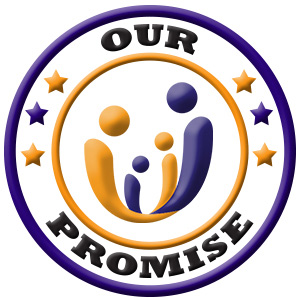
My Child is Abusive Towards Me
How would you define domestic violence? Would you say it is when a partner or wife is battered or when a child is abused? The Public Service Announcements (PSAs) have taught us to be ever vigilant to the signs and horrors of wives/partners and children being abused. What if there was another form of domestic violence that happens all across our country but that nobody talks about it? A type of domestic violence that is so insidious that not only are people left without answers we don’t even have a name for it.
Let’s briefly talk about the domestic violence we all are taught.
Battered wives/partners:
The example I have always used to describe this situation is when the battered wife is asked by her abusive partner to make sure his dinner is served at 6 o’clock. If that dinner arrives at 5:59 then the husband flies into a rage because she is rushing him. And if the dinner arrives at the table at 6:01 he once again flies into a rage because she is late and lazy. Finally, if that dinner arrives exactly at 6’oclock then the husband flies into a rage because why does he have to be married to a person who tries to be too perfect. It’s a no-win situation.
Abused children:
Picture a small child sitting at the top of the stairs with their head in their hands listening to presumably parents yelling. The all too familiar crash of dishes being broken and perhaps a slap can be heard in the background. The caption at the end of the PSA is the familiar phrase “Words can hit as hard as a fist”. Of course, many other PSAs teach us that in abusive families children do worse in school, more likely to turn towards drugs and get into trouble that can include illegal activities that may involve gang involvement.
Furthermore, the PSAs tell us that there are both physical and emotional telltale signs of abuse. These can certainly be physical.
- Broken bones.
- Unexplained and/or frequent bruising, cuts or burn marks.
- Multiple trips to the Emergency Room for the “clumsy person” who keeps walking into the door or falling down the stairs.
More concealed but certainly as debilitating are the psychological effects.
- Constant anxiety, especially when the abuser is around.
- The feelings like you are walking on eggshells.
- Trying to watch when the abuser wakes up or comes home to see if you can tell if this is going to be a good or bad day.
- Depression.
- Substance use/abuse.
- Feeling like you are held hostage in your own home.
The above images easily come to mind because we have all been trained to watch out for the signs and symptoms of domestic violence. The victims should be helped because they cannot get out or fix the situations themselves. They have tried over the course of days, weeks, months and even years. At first trying to fix it, then adjust to it, and finally resigned to live just to get through the day.
Domestic violence is a horrible and terrible injustice for the people forced to live in it.
What other form of domestic violence is so insidious that it doesn’t even have a name? The domestic violence I am speaking of gets no PSAs on TV or the radio. We not only don’t talk about it, we certainly don’t teach people about it and what is worse we oftentimes blame the victim both to their face and as a society. The domestic violence I am speaking of is when a child is abusive to their family.
I know what you’re thinking. These teenage gangbangers that abuse their siblings and parents should be locked up. Perhaps even investigate, accuse or lock up the parents as well because they must have been bad role models. What if I told you that the perpetrator of these acts that bring such torment to the families was six years old? Is that even possible? Could a child wreak that much havoc on a family?
Whether they are 3 or 16 years old, kids that have disorders all have one thing in common. They don’t work like most kids do. Most kids recognize and respond to authority – learn through motivators, discipline and consequences. The ideas of being more strict, firm or united are all great concepts but they rely on the child responding to this approach. The fact is that the more you push the more they will push back. When you back off they walk all over you like a doormat. The parents struggle with a no-win situation and condemned by family, society and even professionals for having poor child-rearing skills.
The fact is that a growing number of psychiatric hospitals are adding units and beds dedicated to young children. In the Chicago area alone, a hospital is adding a new in-patient wing to an already existing program designed to work with kids under the age of 12. One in-patient client was as young as three years old.
Let’s take a simple but painful snapshot into the lives of these families and try to figure out what you would do:
Imagine a child that says they want to watch TV and not go to bed. Think of your response. Perhaps you review the positives and negatives of their decisions. Suggest that they will lose the privileges of TV if they don’t comply. Maybe you pick them up and carry them to their room all the while scolding them. Perhaps you resort to violence yourself. Now imagine that the child not only doesn’t listen to you but they tantrum. Throw things, hit, bite, swear, break objects, slam doors, run out the house, etc. Let’s say that the consequences and talking and bargaining and threatening and all the other tricks in the parent’s bag isn’t working. At what lengths do you force them to comply? Perhaps we let them watch TV and let them learn their lesson by waking them up and sending them to school tired. Now we have the fight in the morning with all the physical acting out behaviors we just mentioned, and in spite of all that, we get them on the bus. Now they haven’t stopped their aggressive behavior so they get suspended from school, the bus and perhaps the police are contacted. The police are handcuffed (forgive the pun) because the child cannot be arrested if they are under ten even if the police were willing to do it. No…the police blame the parents for their inability to manage the child’s behavior and leave the child in the home.
Parents are taught many behavior management and child-rearing skills that often are contradictory by other professionals and when these techniques don’t work the parents (and not the techniques) are blamed. “You should’ve stuck to the plan and not let them watch TV. I don’t care that your life has been a living nightmare during the two days of the behavioral techniques and that the only thing it brought was more aggressive episodes.” In treatment the professionals are supposed to make things better.
Now imagine the cycle of that behavior occurring monthly… weekly… daily and most likely multiple times each day, every day for years. Nothing is working. Not therapy. Not medicines. Not the hospital. The parents are left with the problems of the child, the shame and humiliation of the stigma and blame, and all the signs and symptoms of domestic violence with no escape.
Alternative Teaching offers a 10 session program that can provide relief to parents and families experiencing child behavioral problems from defiance to violence. Using our non-confrontational model for behaviorally disruptive children and adolescents, parents are given the tools and support needed to learn to manage their child’s behaviors.


Write a Comment